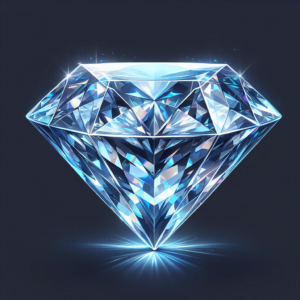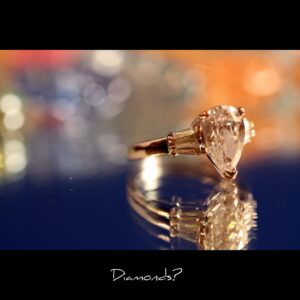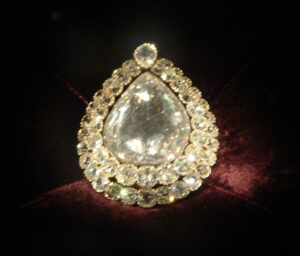What Is The Cheapest Stone That Looks Like A Diamond?
What Is The Cheapest Stone That Looks Like A Diamond? Let’s embark on a gemstone journey and shine some light on a fascinating topic – finding the most affordable stone that carries the dazzling brilliance of a diamond. You might be surprised to discover that there are several budget-friendly alternatives that offer the same radiant sparkle without burning a hole in your pocket. So, why not take a moment and explore this intriguing world of diamond look-alikes? This could be the beginning of a sparkling adventure.
Understanding Diamond Simulants
Definition of Diamond Simulants
Diamond simulants, as the name suggests, are materials used to mimic or simulate the appearance of a real diamond. It’s important to note that these are not synthetic diamonds (which are lab-grown diamonds sharing the same physical properties as natural diamonds). Simulants differ from the real deal in terms of chemical composition, physical properties, and often, optical features as well.
Reasons for Using Diamond Simulants
You might be wondering why diamond simulants are popular. The primary answer is affordability. Real diamonds are stunning, but they’re also quite expensive. Diamond simulants allow you to obtain a similar dazzling look without breaking the bank. Another appealing factor is their eco-friendly nature. The extraction of real diamonds can result in significant environmental damage, a concern not applicable to simulants.
Common Types of Diamond Simulants
Now, let’s talk about a few common types of diamond simulants you may encounter. Cubic Zirconia, White Sapphire, and Rhinestones are among the popular ones that we will delve into detail later in this article.
Introduction to Cubic Zirconia
What is Cubic Zirconia?
Cubic Zirconia, commonly referred to as CZ, is a man-made material that serves as a cost-effective diamond simulant. Its name originates from its cubic crystalline form of zirconium dioxide.
How is Cubic Zirconia Made?
Cubic Zirconia is created through a process called skull melting, which involves melting zirconium oxide powder at extremely high temperatures until it crystallizes. The result is a colorless, sparking stone.
Characteristics of Cubic Zirconia
Cubic Zirconia is known for its striking brilliance, although it’s slightly less sparkly than a real diamond. It’s nearly flawless given that it’s lab-created. One thing to note is that it’s denser and heavier than diamonds, which can be noticeable in larger stones.
Comparison Between Cubic Zirconia and Diamond
Physical Similarities and Differences
Cubic Zirconia and diamonds might look alike, but they have several differences. CZ has a higher dispersion level (the breaking of light into different colors) than diamonds, making it too sparkly sometimes. In terms of hardness, diamonds score a 10 on the Mohs scale, while CZ comes at approximately 8.5.
Comparing the Brilliance and Fire
In terms of brilliance (the white light reflected from a gem), Cubic Zirconia shines brightly but exceeds a diamond’s fire (colored light reflected). This runs the risk of looking too flashy or artificial to a discerning eye.
Durability Comparison
Diamonds are the hardest known substances on earth which is attributed to their durability. CZ isn’t as robust, making it susceptible to scratches over time.
Impact of Cubic Zirconia Quality on Price
Factors Influencing Cubic Zirconia Quality
Despite being a simulant, Cubic Zirconia quality can vary. The cut, color, clarity, and carat – the classic four Cs of gemstone quality – influence its caliber. A well-cut CZ with perfect clarity can look almost as captivating as a diamond.
How Quality Affects Price
Unlike diamonds, which can cost thousands, CZs are much more affordable with prices ranging depending on the four Cs and the stone’s size. However, an impeccably cut CZ with no cloudiness will fetch a higher price than a lesser-quality one.
Introduction to White Sapphire
What is White Sapphire?
White Sapphire is a naturally occurring gemstone, and unlike CZ, it’s not man-made. It’s essentially a Sapphire without any color, hence, transparent and offers a diamond-like appearance.
How is White Sapphire Formed?
White Sapphires are formed over millennia under immense pressure and heat beneath the earth’s crust, alongside other gemstones like rubies.
Characteristics of White Sapphire
White Sapphires are quite hard, scoring a nine on the Mohs scale, making them a durable option. However, their brilliance is somewhat lower than a diamond or CZ.
Comparison Between White Sapphire and Diamond
Physical Similarities and Differences
While a white sapphire can closely mimic a diamond’s appearance, it lacks the latter’s fire and brilliance, resulting in a somewhat glassy, subdued sheen. It doesn’t refract light as intensely as diamonds, which can be a drawback.
Comparing the Brilliance and Fire
As mentioned, White Sapphires don’t shine as brilliantly as diamonds nor do they have the latter’s fire. Still, their subtle, understated elegance appeals to many.
Durability Comparison
White Sapphires come close to a diamond in durability, scoring a nine on the Mohs scale, ensuring they can handle everyday wear.
Impact of White Sapphire Quality on Price
Factors Influencing White Sapphire Quality
Like all gemstones, the quality of white sapphire is influenced by the four Cs, with the cut and clarity significantly affecting its sparkle.
How Quality Affects Price
While much cheaper than diamonds, white sapphires are more expensive than CZs. Stones with perfect clarity and an excellent cut can command higher prices.
Introduction to Rhinestones
What is a Rhinestone?
Rhinestones are made of crystal glass and gained prominence for their usage in costume jewelry due to their diamond-like sparkle.
History of Rhinestones
Interestingly, rhinestones initially referred to quartz crystals collected from the Rhine River in Europe. Today, they are mass-produced and not collected individually from rivers.
Characteristics of Rhinestones
Rhinestones are available in various sizes and colors, and they sparkle brightly. However, they lack the durability associated with diamonds, CZs, or white sapphires.

Comparison Between Rhinestones and Diamond
Physical Similarities and Differences
While rhinestones emanate a diamond-like shimmer, they are visually more similar to CZs. Rhinestones lack the durability of diamonds and can scratch easily.
Comparing the Brilliance and Fire
Rhinestones have high brilliance and fire, akin to a diamond. However, their shine can pale under harsh sunlight compared to a diamond, revealing their authenticity.
Durability Comparison
Rhinestones score low on the Mohs durability scale, making them more suited for occasional wear. Prolonged exposure to moisture or chemicals can damage them.
Final Overview and Comparison Between Cubic Zirconia, White Sapphire, and Rhinestones
Comparing Price Points
In terms of price, Rhinestones are the cheapest, followed by Cubic Zirconia and White Sapphires. However, these price gaps are significant, with Rhinestones being incredibly affordable and White Sapphires being a luxury purchase.
Comparing Durability and Longevity
For longevity, diamonds reign supreme, but among the simulants, CZs, and White Sapphires are relatively durable while rhinestones fall short.
Which Stone is Most Similar to Diamond?
In terms of appearance, both Cubic Zirconia and White Sapphires are reasonably similar to diamonds but CZ is more so due to its superior brilliance. However, in terms of hardness and durability, White Sapphires come closer to diamonds.
In conclusion, while each of these stones has its own merits, your choice will come down to personal preference, budget, and the occasion you plan on wearing them. After all, different folks, different strokes! https://www.gia.edu/gia-bangkok




